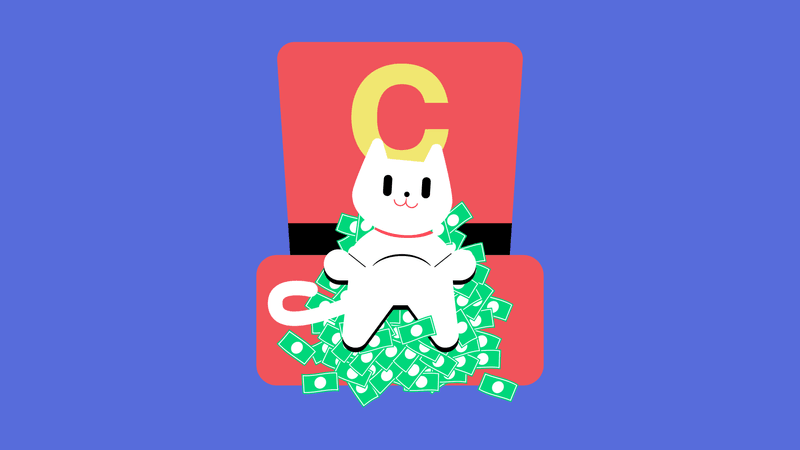We raised money again
RevenueCat CEO Jacob goes into the what, why, and how of our latest funding round

We just raised a $12m Series C round of funding. Jacob gives you the details on why, and what we plan to do with the funding
🚀 🎉 Want to see of the amazing stuff we built over the last 4 months, and get a taste of what’s coming? Join our Launch Party webinar on April 30th: Secure your seat 🚀 🎉
Our series B was almost exactly 3 years ago, and I think it would be useful to share with the community an update on where RevenueCat is as a company, where we are heading, and how we plan to keep helping you all make more money.
After the series B
February 2021, when we got our series B term sheet, was very close to the peak of the ZIRP era. We were preempted for an amount of money we didn’t know what to do with, at a price that seemed pure fantasy. In defense of the deal, we had grown from $1M to $3M in ARR in a year, and it seemed like we’d blast through $10M ARR in another year. But what would follow was a relatively rough patch in the journey. We had raised a ton of capital, but didn’t really know how to build or run a company with that level of resources. Lots of false starts, mistakes, and ultimately decelerating growth in 2021 and 2022 that had me wondering if we’d flown ourselves into a box canyon.
In the Spring of 2023, as all the air let out of the ZIRP period, our bank, series B investor, and servers all collapsed in the same week. This was the beginning of a new RevenueCat for Miguel and me. We were done taking (too much) advice, and decided to return to what we’ve always done: building the company we want to work for, and helping developers make money by shipping cool stuff. This mindset shift led to a rapid cultural turnover at the company, focusing us 100% on shipping and selling stuff to help developers make more money. We were able to reaccelerate growth in 2023 and 2024 is shaping up to be the same.
The new round
This is what gave us the confidence to raise a mini series C (the news broke on TechCrunch earlier today). I call it mini, because it’s just a little bit of capital in comparison. We still have most of the money we raised in 2021, and adding cash to the balance sheet only helps at the margins. We now have over $40M in the bank, are crossing $20M in ARR, and are accelerating. We still aren’t profitable, but that is by design. We halved our burn rate since last summer, our runway is effectively infinite, as we have enough growth to cover our losses with just minor shifts in hiring and investments. This is the mode I intend to operate the company in while capital is available. RevenueCat is too important to too many apps to risk the company driving towards a financial cliff. This may be counter to the prevailing narrative of how venture backed companies should be built, but our investors are aligned with us and know that Miguel and I are leading the company to maximize the value for developers. Investors make more money when developers make more money. To that end, we’re still aiming to take the company public in this decade. We have a very long way to go, but I still believe that a profitable, growing, public RevenueCat is the best long term ownership structure for the company. Public markets bring discipline, and RevenueCat is too important of a company not to have good discipline.
A great group of backers
Alongside this investment, Nico Wittenborn of Adjacent will be joining the board. Nico is a seasoned investor in consumer subscriptions, and has invested in some of our biggest customers like Photoroom and Backbone. He brings to the boardroom a deep understanding of our market, but also a conviction that consumer focused subscription software is only in its infancy. A belief we share. I also want to say thank you to our other backers over the last few years that have been patient and helpful as we found our footing in our “mid stage.” Especially Jason Lemkin, our first investor and ever faithful supporter, Mark Fiorentino at Index Ventures for holding down the board room, and Andrew Maguire of Volo Ventures for the countless hours of “chopping it up.”
Thanks to you!
And of course, a huge thank you to all of our customers. I have a saying internally, that a company “does not have a right to exist”. That it exists only to serve its customers, and their patronage is what gives us the permission to exist. We couldn’t build this company without the thoughtful feedback, patience, and enthusiasm of our customers. We don’t always get it right, but we aim to make sure the revenue you share with RevenueCat is never regretted.
What’s next?
So, what are we going to do for you all? We have a few focuses right now. We want to make it easier for folks to switch into RevenueCat. RevenueCat is a great tool if you are just adding monetization today, but the process of porting into RevenueCat has always been clunky. We’re leveraging every stupid trick we’ve learned about the app stores to get as close to a no-code migration as possible, enabling more teams to try RevenueCat with fewer resources. This will have benefits in a simpler user experience for all users of RevenueCat. This comes along with a general push for more “enterprise readiness” as we invest in reliability and security across the product and infrastructure. We’ve recently added our first dedicated security engineer, and our infrastructure team is our largest single engineering team at the company. I expect lots of quiet innovation here in the coming year.
RevenueCat Billing and other platforms
We’re also looking to expand our supported platforms. We recently launched the RevenueCat Billing beta, bringing a first class web billing solution for mobile apps to our platform. We intend to continue investing there, but also into other platforms and payment providers. As regulations like the DMA continue to point app store monetization in a direction of uncertainty, we aim to anticipate and capitalize on these changes for the benefit of developers. We believe RC should continue to eat as much complexity as possible in your billing stack.
Helping you actually make more money
And lastly, we are continuing to invest in actually helping developers make more money with tools like Experiments, Targeting, Paywalls and more. We have more ideas than we have the time or talent to implement, and having a few extra nickles will allow us to build more of the things you’re asking for sooner. We aim to both make the easy things automatic (churn recovery) and make the hard things easy (better tools to find out what resonates with your users).
This is Miguel’s and my seventh year of working on the cat, and daily we find it hard to comprehend how far we’ve come. From 2 engineers in a living room, to 30,000 apps and billions in tracked annual revenue in seven short years. We can’t wait to see where we are in another seven.
You might also like
- Blog post
The State of Subscription Apps 2025: The year AI ate everything
AI, hybrid monetization, and retention are reshaping subscription apps. Here’s what the data says.
- Blog post
Join our Tokyo Spring 2025 Tour: A cultural & business exchange for app growth professionals
Join our Tokyo Spring 2025 Tour!
- Blog post
Hack Week 2025: 5 standout projects (and more!) from a week of innovation
A week of fast shipping, creative problem-solving, and projects that might just make it to production.

